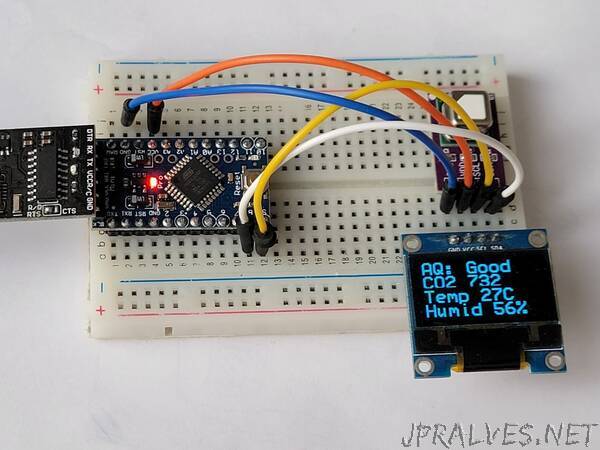
“Environmental sensing and air quality have always been fascinating to study. I’ve tested various sensors over the years that, until recently, cost next to nothing. The COVID pandemic increased my curiosity (and concern) about indoor air quality, CO2 levels, and shared air. In the past, I tried to save some money and use the “eCO2” value from several inexpensive sensors, but the results were unreliable and unsatisfying. eCO2 is an “equivalent CO2” value generated by some VOC (volatile organic compound) sensors. The idea is that human breath contains lots of VOCs and if you detect them, you’re also detecting CO2. The flaw in this thinking is that a lot of other things generate VOCs and have nothing to do with CO2. A good example of a false positive is food preparation. Bring your VOC sensor into the kitchen when you’re cooking and it will tell you that the air has a toxic level of “eCO2”. I’ve been wanting to experiment with true CO2 sensors, but the cost has kept me from following through because I didn’t have a real project in mind. I finally took the plunge with a true CO2 sensor because Sensiron recently launched a small, low power one that looked like a worthwhile acquisition - the SCD41. This sensor is a cube of roughly 8mm on a side that reports an accurate CO2 measurement using an IR light scattering method.
The initial readings looked quite high, but I assumed that the sensor needed time to “settle” or calibrate itself. I left it running overnight and when I woke up, the reported CO2 level was disturbingly high (>3000ppm). I had read a bit about the CO2 concentration values and how they affect your wellbeing, but I still thought there must be something wrong with my setup. On a whim, I held the sensor out an open window and lo and behold, the value settled close to the Earth’s current average of around 430ppm. This was quite the eye opener. I had been living with the windows closed for most of my life because the HVAC systems in my various homes were in constant use to maintain the temperature and humidity levels. This is especially true in South Florida during the summer. The air intake for many homes is in an interior hallway, so fresh (outside) air isn’t added to the home through the HVAC system. The external air is hot and humid and if you don’t keep the A/C running and your windows closed, your house will become covered with mold and mildew. I assumed enough air seeped under the doors and windows to keep the CO2 levels reasonable, but I was quite plainly wrong.”
